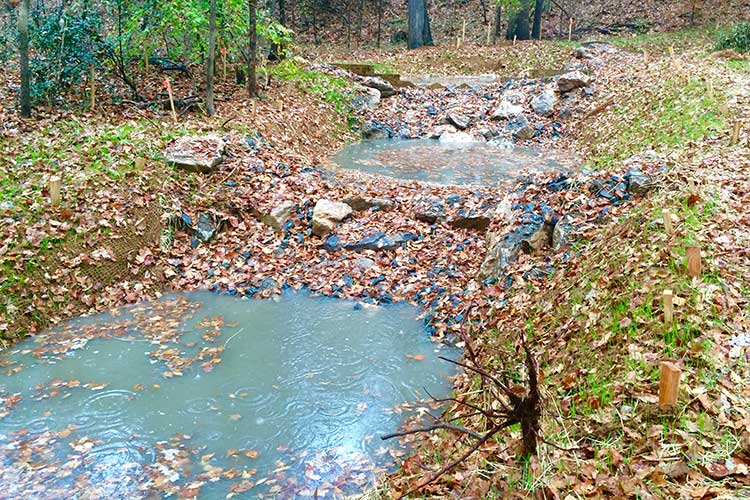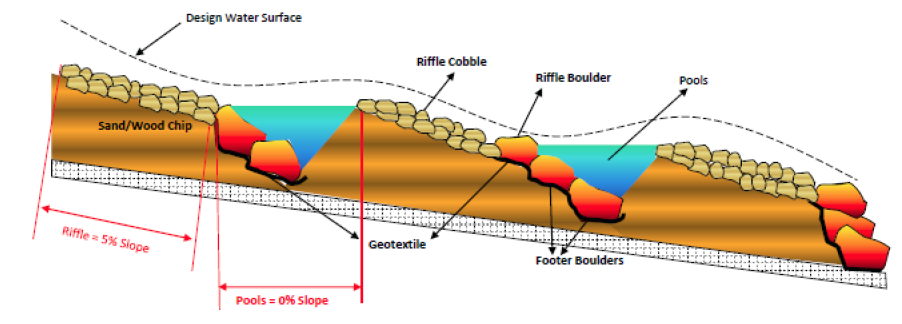A New Method To Restore Streams, Borrowed from Maryland
By BARBARA DOLL
Posted March 9, 2015

The practice of stream restoration first emerged in the late 1980s. Experts attempted to reshape degraded stream channels to mimic the form and function of high-quality streams, with the goals of improving stability, habitat and/or floodplain function.
As a relatively new field of practice, stream restoration has rapidly progressed. Many designers and contractors are continually working to adapt existing practices and develop new approaches in order to improve performance.
Regenerative stormwater conveyance, or RSC, is a recent example of an innovative technique for restoring headwater streams that focuses predominantly on stabilizing highly eroded channels that carry stormwater runoff from urban areas.
The RSC was developed and implemented in the coastal plain of Maryland. Keith Underwood, a pioneer of this approach who has designed and constructed many of the projects in Maryland, intended the RSC to mimic and, in some cases, recreate a coastal bog habitat. He sought to provide more habitat for the rare plants found in coastal bogs — such as Atlantic white cedar, moss and carnivorous plants — while also treating stormwater runoff.
The practice involves filling an eroded gully with a mix of sand and mulch, and then constructing an open-water channel atop this layer to transport water during large storms. The open channel consists of a series of shallow pools, rocky riffles and native vegetation, which resembles many typical stream restoration projects.

The figure above was taken from the West Virginia Stormwater Management & Design Guidance Manual by the West Virgina Department of Environmental Protection.
Water that enters the RSC is intended to seep into the sand and mulch layer during small storms and be conveyed as surface flow during larger storms. The sand and mulch media is permeable so that that runoff water easily infiltrates from the pools into this layer.
The sand and mulch are designed to filter out sediment and associated pollutants as the runoff water flows through. The layer also provides a home for microorganisms that can remove nutrient pollution. In addition, as the water slowly seeps through the media, it can infiltrate into the surrounding soil and help to recharge groundwater.
A team of NC State University researchers from the Biological & Agricultural Engineering Department are monitoring some of the first RSC projects installed in the state. This includes a tributary to Third Fork Creek, adjacent to the Southern Boundaries Park in Durham, N.C. The project was initiated by the City of Durham Stormwater & GIS Services, designed by Biohabitats and installed by North State Environmental, Inc.
This highly eroded tributary drains seven acres that are 37 percent impervious cover — such as roads, parking lots and rooftops. The RSC was constructed in November 2014. The research is intended to verify if the new approach is successful at removing pollutants and infiltrating stormwater runoff into the groundwater.
Here’s a view of the Third Ford Creek RSC installation.
In addition, I am part of a BAE project that has just begun monitoring two highly eroded stream channels in Randolph County that drain pastureland that is sprayed with animal waste. One of the channels will be restored using an RSC design while the second channel will remain unchanged. By continuing to monitor both channels, we hope to gain a clear comparison for determining the changes that result from the restoration.
- Categories:


